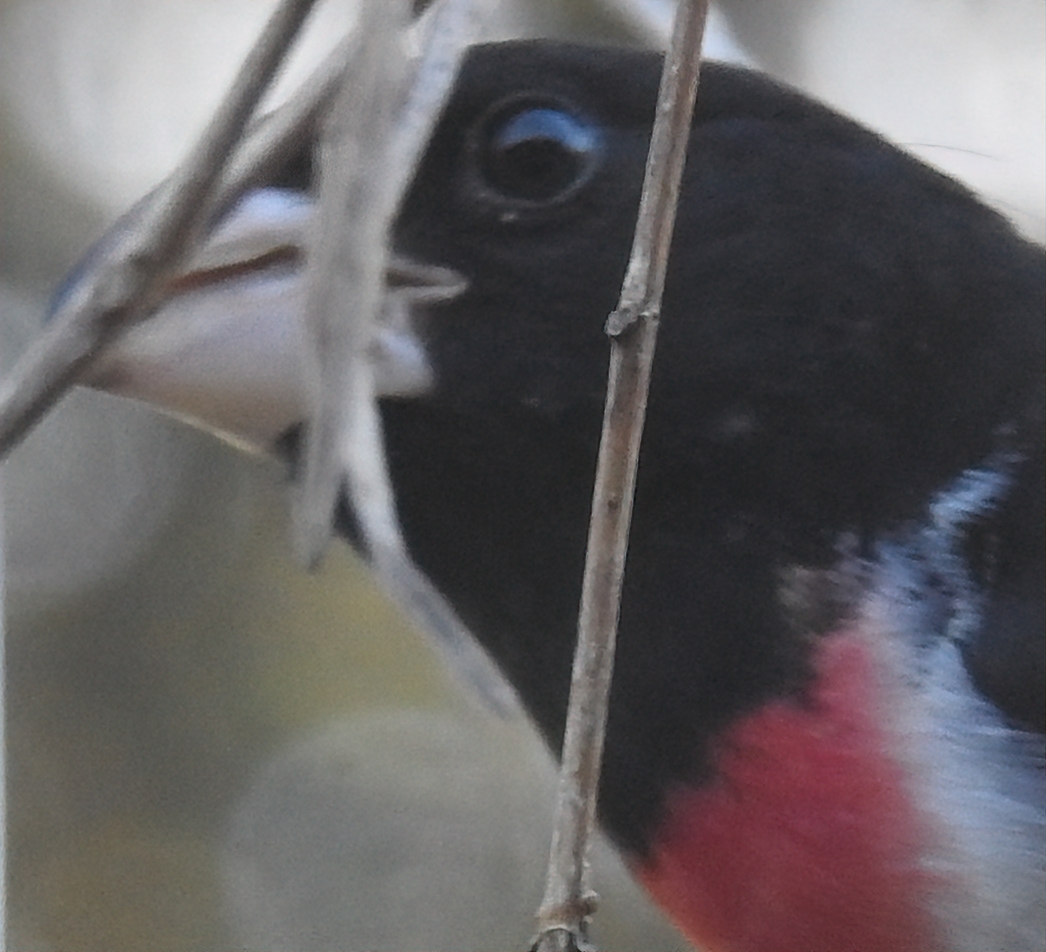by M. Kathy Raines

The striking bird—its white chest seemingly splattered with crimson paint—hopped about with his female companion in the grass at the South Padre Island Convention Center last April, eating its fill, undaunted by ardent photographers.
These rose-breasted grosbeaks, fatigued and famished, stop off here in April and early May to rest and refuel, staying anywhere from a few hours to a few days. Reaching a springtime velocity of close to 50 mph, they migrate perhaps a thousand miles, often nonstop over the Gulf, from their winter homes in southwestern Mexico, Central or South American to their breeding grounds in the Midwest, Northeast or Canada. Our short, sparse trees and brush—coupled with the birds’ exhaustion—offer us a unique opportunity to observe them, unobscured by the tall, lush vegetation of their homes.

Though no less vivid than our own green jays and great kiskadees, the male rose-breasted grosbeak is a quite a stunner with his chunky, triangular beak, black head, white underparts and splash of red on its breast. The female’s feathers are streaked brownish black with yellow wing linings. Their sweet, rich songs, like those of other grosbeaks, are much cherished.
In the family Cardinalidae, the rose-breasted grosbeak (Pheucticus ludovicianus) is closely related to cardinals, buntings and tanagers, who also sport sizeable beaks, suitable for cracking open seeds. Spanish speakers may call this grosbeak picogrueso pechirrosa (large beak, rose chest) or candelo tricolor (reddish blonde, 3-colored).
The rose-breasted is one of four of our occasional visiting grosbeaks. Both the crimson-collared, a native of northeastern Mexico, and the black-headed have delighted local birdwatchers this February. The black-headed, which hails from the western U.S., occasionally hybridizes with the rose-breasted where densities of both species are low. The blue grosbeak, from the South, West and lower Midwest, has bred here occasionally.
Rose-breasted grosbeaks, which relish sunflower and safflower seeds and raw peanuts, frequent birdfeeders. They also consume a variety of fruits, berries, buds, flowers, insects, spiders and snails. In autumn, they eat primarily fruit, while during peak breeding season, they consume chiefly invertebrates. Red-breasted grosbeaks forage on the ground or among leaves, branches and trunks for vegetable matter, removing petals from flowers, crushing pods to extract seeds and discarding skin from fruit. They collect insects from leaves or bark or catch them midair, crushing them in their bills before eating.
With our recent freeze, we may be short on the springtime fruit that grosbeaks crave, but refuge managers and other enthusiasts will provide them with birdseed, also a favorite. Javier Gonzalez, Natural Educator at the South Padre Island Birding, Nature and Alligator Sanctuary, fears some plants “will not have enough time to recuperate and have berries by the time the birds start arriving.” However, he says that with “kind donations from the community”, the Birding Center is restoring habitats to “supply migrants with as much energy as possible when they stop by.”
Male rose-breasted grosbeaks—dazzling, sweet-voiced creatures—are sometimes captured and caged, as are equally stunning painted buntings. The grosbeaks do inflict damage by dining on precious buds, flowers, peas and fruits, but they also eat potato beetle larvae and other destructive insects. The Union for Conservation of Nature (IUCN) lists rose-breasted grosbeaks as of “least concern”, though their numbers are declining, likely due to human encroachment and collisions with towers during migration.
With birdseed aplenty, along with new and gradually recovering plants, we once more welcome these lovely creatures during their brief stopovers in our yards and refuges.

